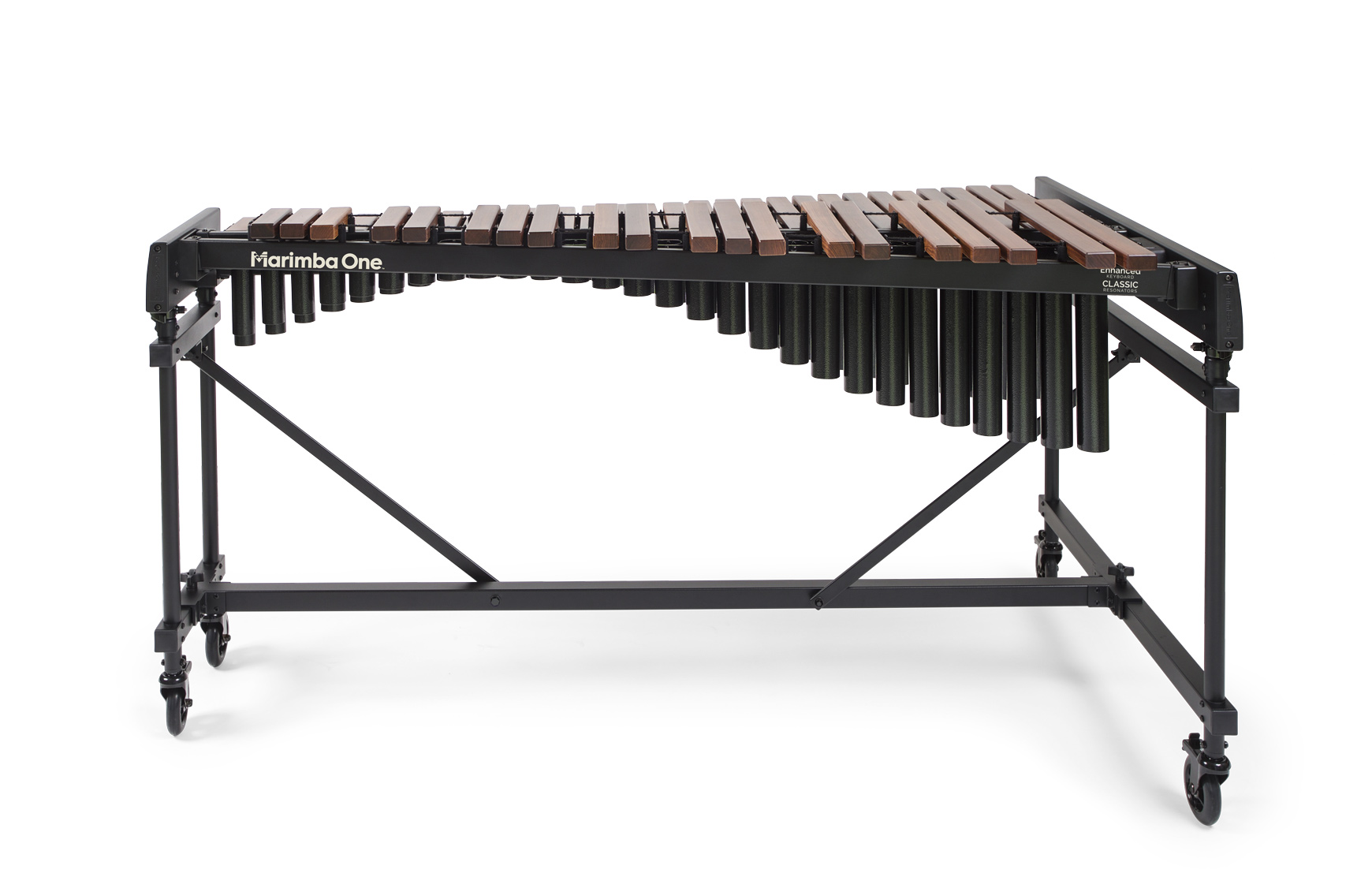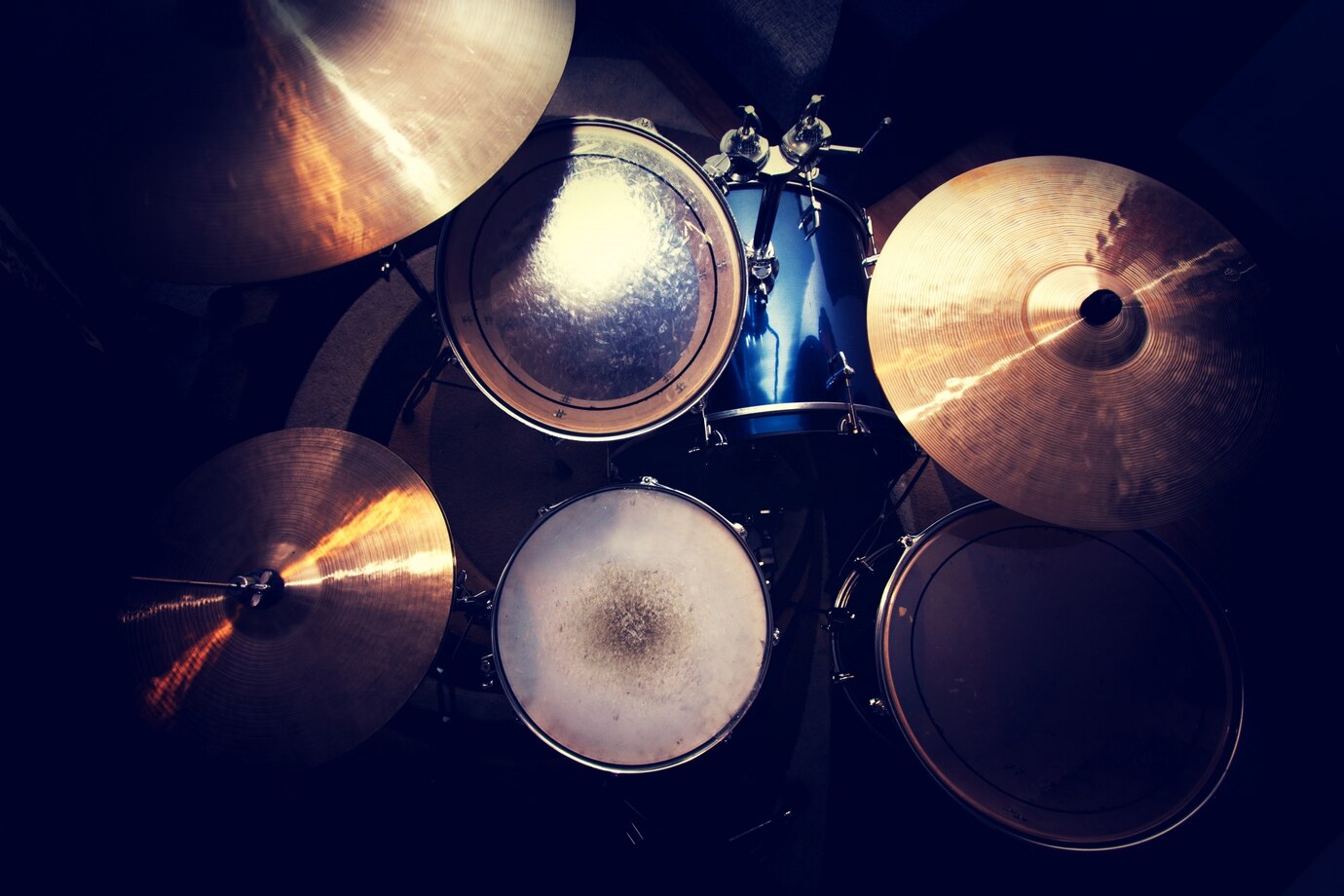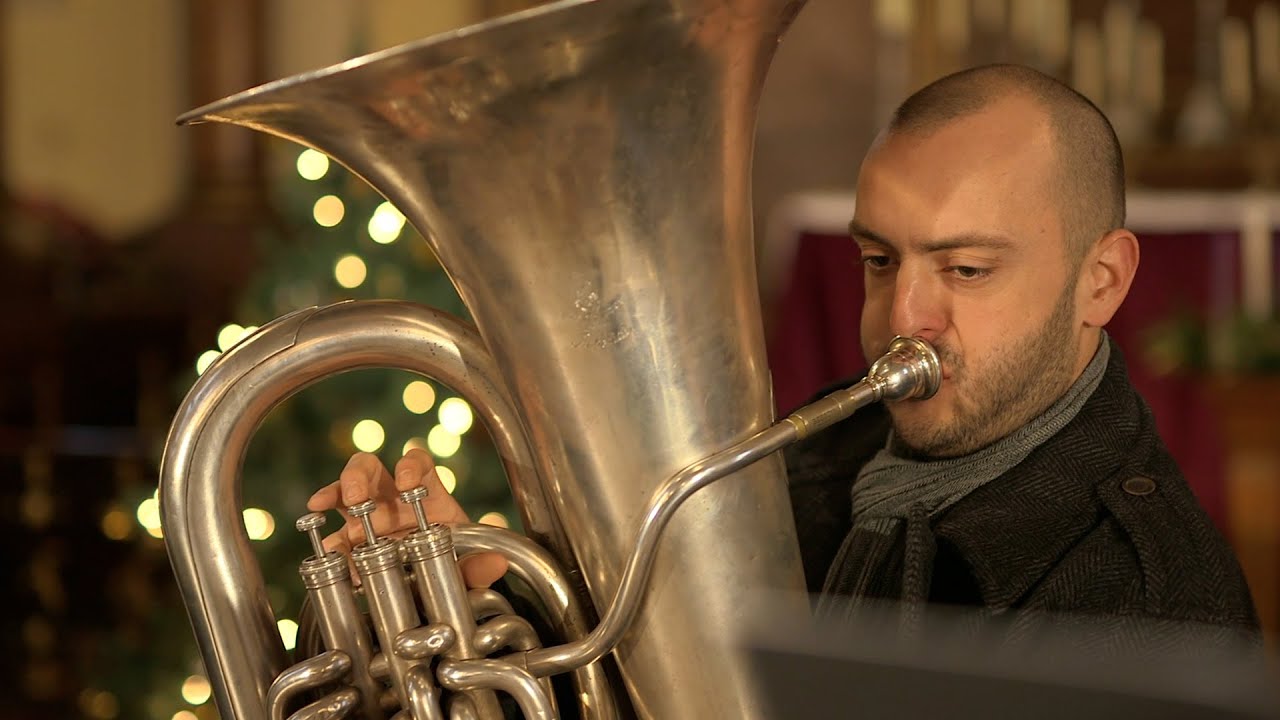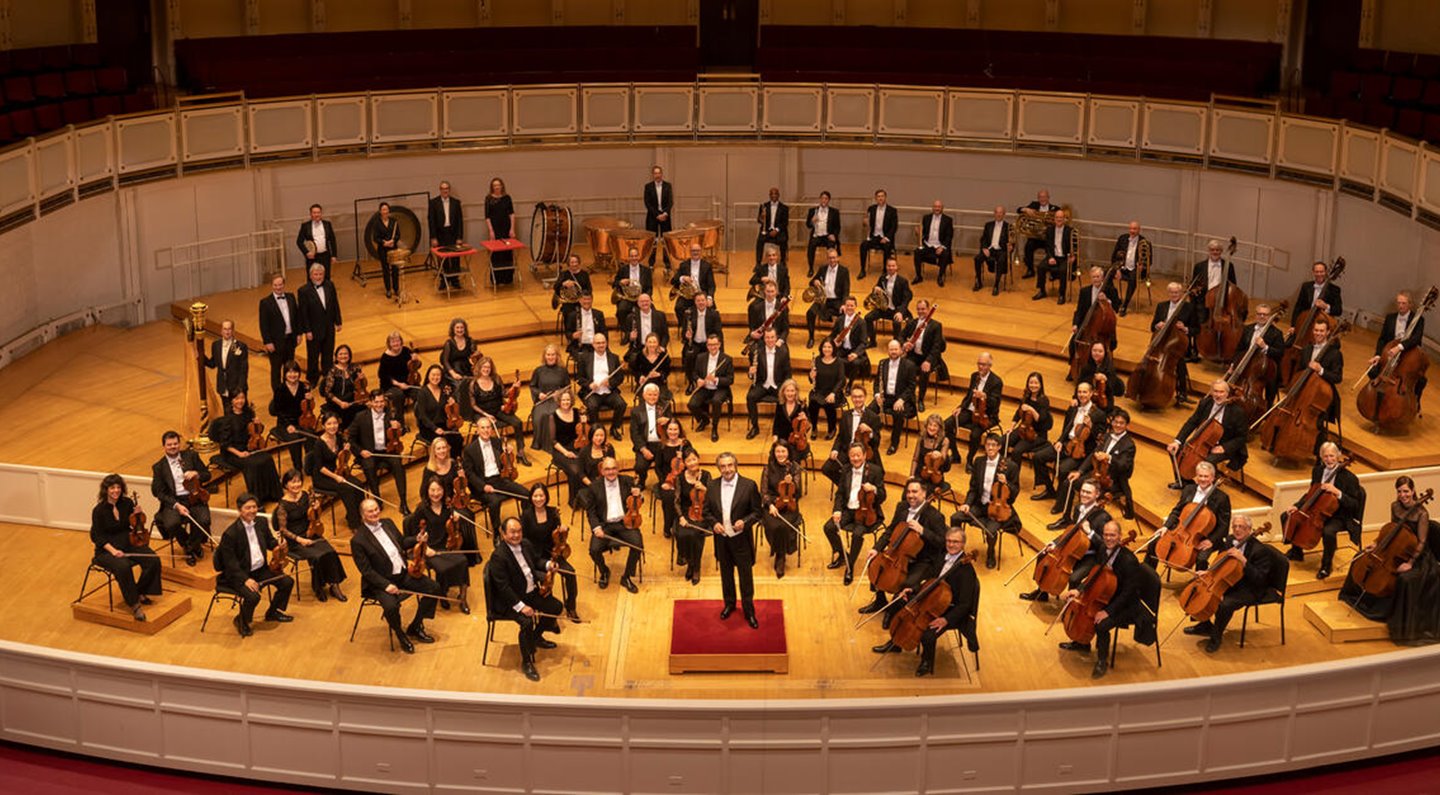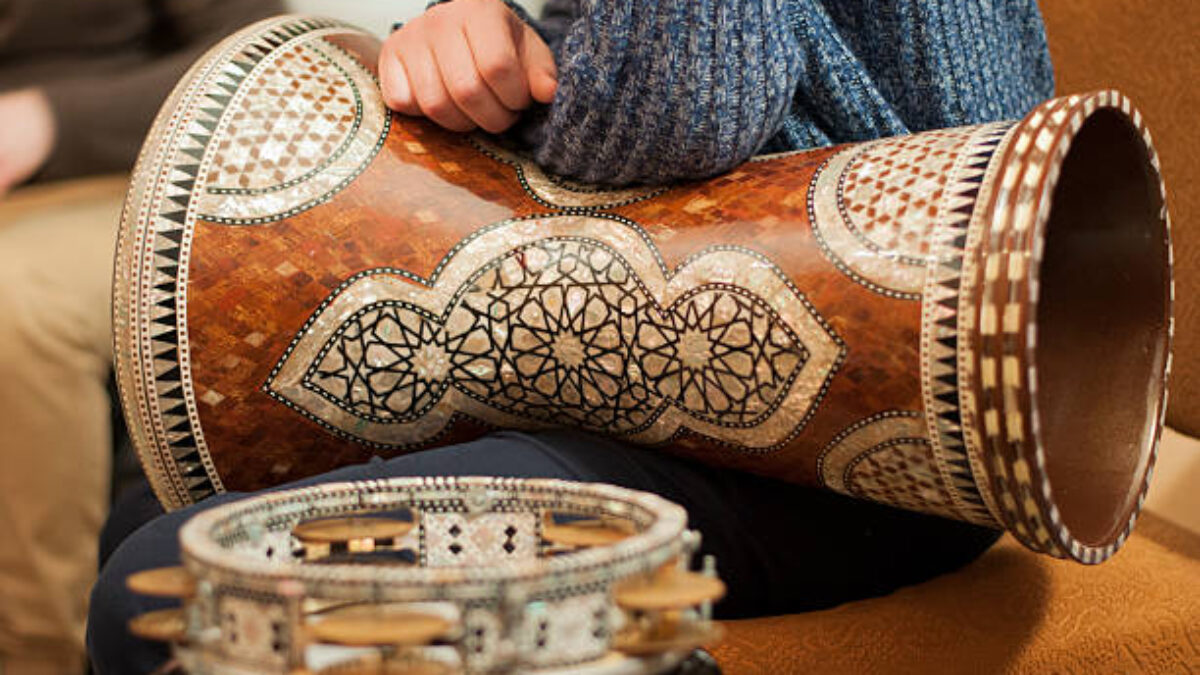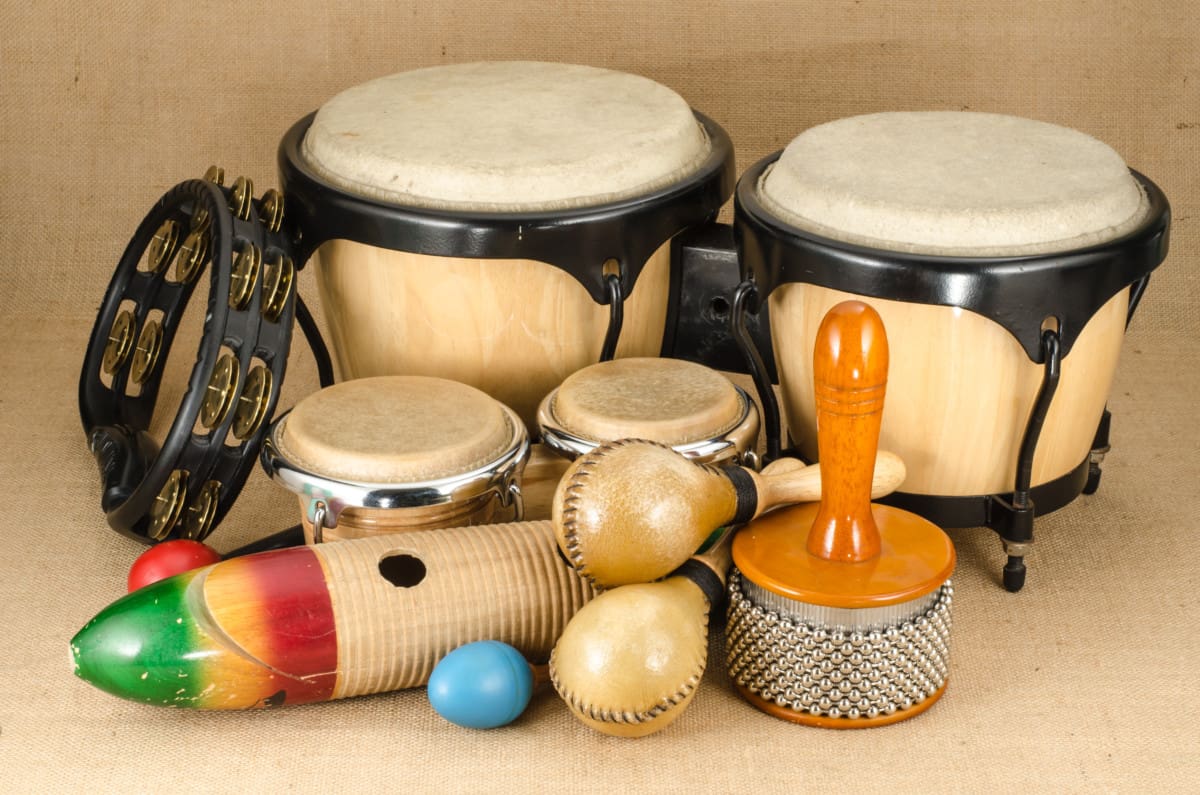Home>Instruments>Percussion Instruments>How Many Percussion Instruments Are There In An Orchestra
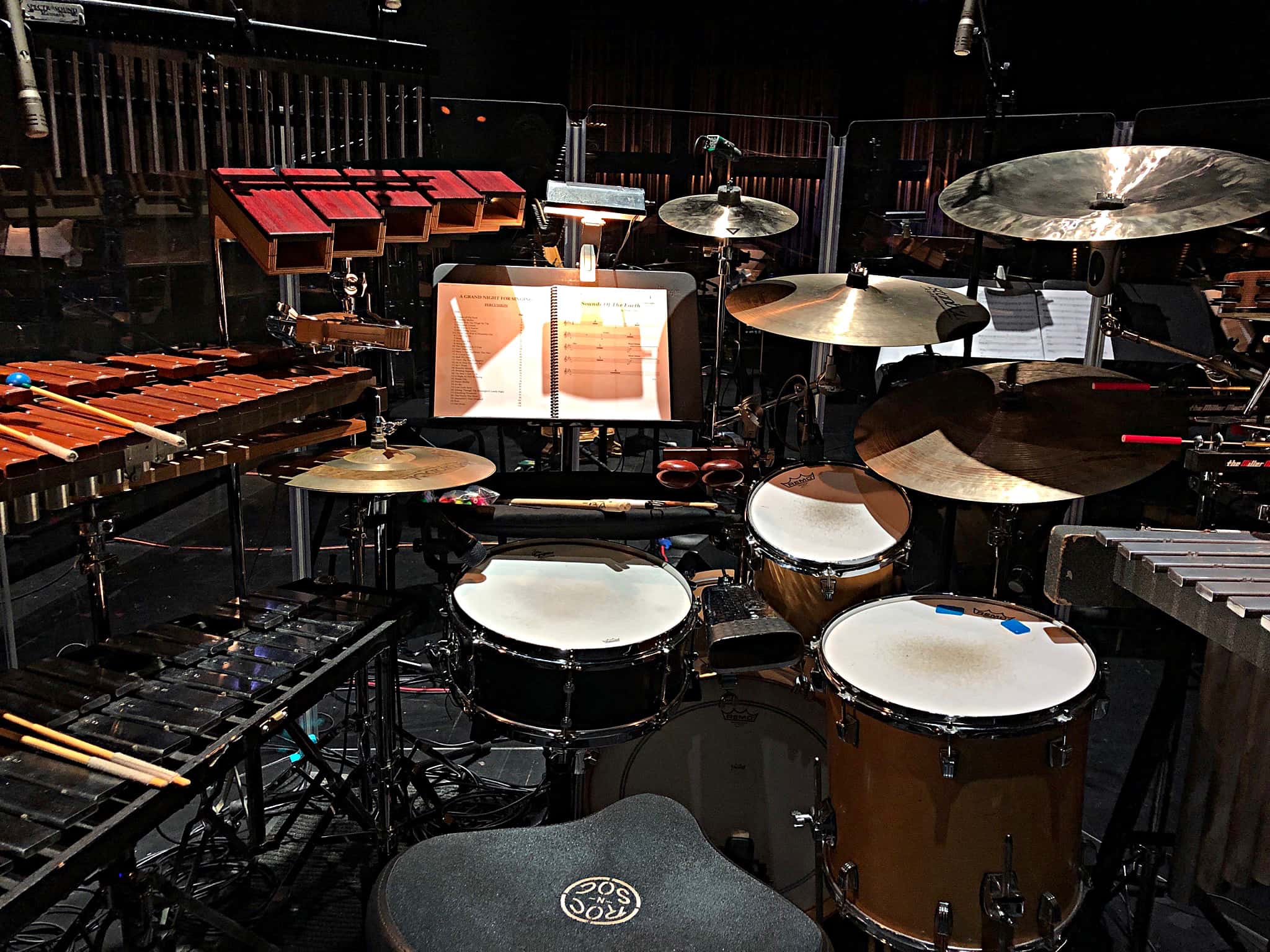

Percussion Instruments
How Many Percussion Instruments Are There In An Orchestra
Modified: February 24, 2024
Learn about the variety of percussion instruments in an orchestra, including drums, cymbals, and xylophones. Discover how these instruments add rhythm and depth to musical performances.
(Many of the links in this article redirect to a specific reviewed product. Your purchase of these products through affiliate links helps to generate commission for AudioLover.com, at no extra cost. Learn more)
Table of Contents
Introduction:
Percussion instruments play a vital role in the world of music, providing rhythm, texture, and color to musical compositions. They are an essential part of an orchestra, infusing energy and excitement into performances. From the thunderous boom of a bass drum to the delicate tinkling of a triangle, percussion instruments add depth and character to musical ensembles.
In this article, we will explore the diverse world of percussion instruments found in an orchestra. We will delve into the different types of percussion instruments and their unique characteristics. Whether you are a music enthusiast, a percussionist, or simply curious about the instruments that create the rhythmic backbone of an orchestra, this article will provide you with a comprehensive guide.
Join us as we uncover the fascinating world of snare drums, timpani, cymbals, and more. Learn about the techniques used to play these instruments, their history and evolution, and their role in different musical genres. Discover why percussion instruments are cherished and relied upon by composers and musicians alike.
Whether you are attending a symphony concert, rocking out to a jazz band, or enjoying a modern pop performance, percussion instruments are sure to leave a lasting impression. So, let’s grab our drumsticks, take a seat in the percussion section, and dive into the captivating world of orchestral percussion instruments.
Percussion Instruments in an Orchestra:
In an orchestra, percussion instruments serve as the heartbeat, adding rhythm and depth to the overall musical composition. They are often located at the back of the ensemble, behind the strings and brass sections, but their impact can be felt throughout the entire performance.
Unlike other sections of the orchestra that consist of specific instruments, the percussion section is diverse and versatile, incorporating a wide range of instruments from drums to bells and everything in between. Percussionists are skilled in playing several instruments, often requiring them to switch between different instruments within a single piece of music.
The percussion section is responsible for providing a strong rhythmic foundation, enhancing the dynamics, and adding dramatic effects to the music. They create a vast array of sounds, from sharp and explosive crashes to gentle and subtle shakes, all contributing to the overall expression and emotion of the piece.
Furthermore, the percussion instruments in an orchestra are not limited to traditional acoustic instruments. With the advent of technology, electronic percussion instruments have also found their place in modern orchestras, adding a contemporary touch to the traditional repertoire.
The percussion section in an orchestra typically includes instruments such as the snare drum, bass drum, timpani, cymbals, triangle, tambourine, xylophone, marimba, glockenspiel, and vibraphone. Each instrument brings a unique sound and character to the ensemble, making the music richer and more vibrant.
To ensure a seamless performance, percussionists work closely with the conductor and other musicians, following cues and transitions, and adapting their playing style to complement different musical genres and styles. Their precision and coordination are crucial to maintaining the overall balance and cohesion of the orchestra.
Now that we have a general understanding of the importance of percussion instruments in an orchestra, let’s take a deeper dive into the individual types of percussion instruments and explore their distinctive features and roles.
Types of Percussion Instruments:
Percussion instruments can be classified into various categories based on their construction, playing technique, and sound production. In this section, we will explore some of the most commonly used percussion instruments found in an orchestra:
- Snare Drum: The snare drum is a versatile instrument that produces a sharp and snappy sound. It consists of a metal or wooden shell with a drumhead made of plastic or animal skin on top and a set of snare wires stretched across the bottom. The snare drum is played with drumsticks or brushes and is known for its rhythmic and dynamic capabilities.
- Bass Drum: The bass drum is the largest and lowest-pitched instrument in the percussion section. It has a deep, booming sound and is played by striking the drumhead with a mallet or pedal-operated beater. The bass drum provides a strong foundation and adds power and impact to the orchestra’s sound.
- Timpani: Also known as kettle drums, timpani are large drums with a bowl-shaped body and a drumhead that can be tightened or loosened to change the pitch. Timpani are played with specialized mallets and produce a rich, resonant tone. They are capable of playing melodies, harmonies, and powerful rhythmic patterns.
- Cymbals: Cymbals are metal discs that create a ringing sound when struck together. They come in various sizes and can be clashed together, struck individually, or rolled along the edges to produce different effects. Cymbals add brilliance, drama, and accents to orchestral music and are an essential part of percussion sections.
- Triangle: The triangle is a small but mighty instrument made of a metal rod bent into the shape of a triangle. It is played by striking it with a metal beater, creating a shimmering and resonant sound. The triangle is often used to add a touch of sparkle and delicate accents to the music.
- Tambourine: The tambourine is a handheld instrument consisting of a circular frame with metal jingles and a drumhead. It is played by shaking it, striking it with the hand, or tapping it with the fingers. The tambourine provides rhythmic texture and a jingling sound that adds energy and excitement to the orchestra.
- Xylophone: The xylophone features a series of wooden bars of different lengths, arranged in a keyboard-like fashion. It is played by striking the bars with mallets, producing distinct pitches. The xylophone has a bright and percussive sound and is often used to play melodies and intricate passages.
- Marimba: Similar to the xylophone, the marimba is a larger instrument with wooden bars and resonators to amplify the sound. It has a warm and mellow tone and is played with mallets. The marimba is capable of playing complex melodies and chordal accompaniments.
- Glockenspiel: The glockenspiel is a percussion instrument similar to the xylophone, but with metal bars instead of wooden ones. It produces a bright and bell-like sound and is played with mallets. The glockenspiel adds a sparkling and ethereal quality to orchestral music.
- Vibraphone: The vibraphone is a melodic percussion instrument that features metal bars with resonators and a mechanism that creates a vibrato effect. It is played with mallets and can produce a wide range of dynamic and expressive tones. The vibraphone adds a mellow and atmospheric quality to orchestral compositions.
These are just a few examples of the many percussion instruments found in an orchestra. Each instrument brings its own unique sound and contributes to the overall sonic tapestry of the ensemble. Now that we are familiar with the different types of percussion instruments, let’s explore each instrument in more detail.
Snare Drum:
The snare drum is a versatile and essential percussion instrument found in orchestras, marching bands, and various musical genres. It is characterized by its distinctive cracking and snappy sound, which is produced by the interaction of a drumhead and a set of tightly stretched snare wires on the bottom of the drum.
The snare drum typically has a shell made of wood or metal, with a drumhead made of plastic or animal skin stretched across the top. The drumhead is played with drumsticks or brushes, allowing the performer to create a wide range of sounds and effects.
In orchestral music, the snare drum is often used to provide rhythmic accents, rolls, and fills. It works in conjunction with other percussion instruments and the rest of the ensemble to create a cohesive and dynamic sound. The snare drum also plays a crucial role in military marches, adding a distinct marching rhythm and creating a sense of intensity and discipline.
Playing the snare drum requires skill and precision. The performer must have a good sense of timing, control, and dynamics to execute the desired rhythmic patterns and accents. Drummers often use various techniques such as rimshots, cross-sticking, and buzz rolls to produce different sounds and articulations on the snare drum.
In addition to its traditional role in orchestral music and marching bands, the snare drum has also found its place in contemporary genres such as rock, pop, and jazz. It is frequently used in drum sets, adding a sharp and cutting sound to the overall rhythm section.
Overall, the snare drum is a versatile and indispensable instrument that adds depth, texture, and rhythmic intensity to any musical composition. Its unique sound and expressive capabilities make it a favorite among percussionists and composers alike.
Bass Drum:
The bass drum is a large and powerful percussion instrument that forms the foundation of the orchestral percussion section. Known for its deep and resonant sound, the bass drum adds weight and impact to musical compositions.
The bass drum consists of a hollow cylindrical shell made of wood or metal, typically covered by a drumhead made of synthetic material or animal skin. It is played by striking the drumhead with a mallet or a pedal-operated beater.
In orchestral music, the bass drum serves multiple purposes. It provides a steady and driving beat, establishing the rhythmic pulse of the piece. It creates dramatic and thunderous accents, adding intensity to climactic moments. Additionally, the bass drum can produce a sustained low pitch, creating a sense of tension and anticipation.
Playing the bass drum requires strength and control. Percussionists must apply the right amount of force to elicit the desired sound, while also maintaining precision and musicality. They may use various playing techniques, such as hitting the drumhead near the center or towards the edge, to produce different tones and articulations.
Beyond its role in orchestral music, the bass drum is also prominent in marching bands and drumline ensembles. In these contexts, it adds a rhythmic drive and provides a solid foundation for the entire group.
With the advent of modern drum sets, the bass drum has become an integral part of popular music genres such as rock, pop, and jazz. Positioned horizontally and played using a foot pedal, the bass drum provides a defining thud and a driving beat in the rhythm section.
Overall, the bass drum is a fundamental percussion instrument that brings power, depth, and impact to musical performances. Its commanding presence and ability to produce resonant low frequencies make it a force to be reckoned with in any ensemble.
Timpani:
The timpani, also known as kettle drums, is a melodic percussion instrument that adds depth and resonance to orchestral music. It is one of the oldest percussion instruments in existence and has been an integral part of the orchestra for centuries.
Timpani consist of large, bowl-shaped drums with a drumhead stretched over the top. The drumheads are made of either calf skin or synthetic materials and can be tightened or loosened to adjust the pitch. Each drum is equipped with a set of tuning pedals or handles that allow the performer to vary the tension of the drumhead.
Timpani are played with specialized mallets, typically made of wood or felt, which produce a rich and resonant sound. The performer strikes the drumhead at different locations to achieve variations in tone and articulation.
In the orchestra, the timpani serve multiple roles. They provide a melodic foundation, playing specific pitches or notes assigned by the composer. They also contribute to the rhythmic drive and accentuation of the music, adding emphasis to important moments. Additionally, timpani are capable of producing sustained rolls and glissandi, adding texture and drama to orchestral compositions.
Playing the timpani requires both technical skill and musical sensitivity. Percussionists must have a good sense of pitch and be able to execute precise and controlled strikes on the drumhead. They also need to listen attentively to the other sections of the orchestra and adjust their playing dynamically to fit within the overall musical context.
Timpani are often featured in symphonies, concertos, and other large-scale musical works. They are renowned for their majestic and imposing sound, capable of adding a sense of grandeur and profundity to orchestral performances. Timpani solos or cadenzas are also a highlight in many compositions, showcasing the instrument’s versatility and expressive capabilities.
Overall, the timpani are a vital component of the percussion section in an orchestra. Their ability to provide melody, rhythm, and dynamic impact makes them an indispensable instrument in shaping the sound and emotional landscape of orchestral compositions.
Cymbals:
Cymbals are an essential component of the percussion section in an orchestra, known for their ability to add brilliance, texture, and dramatic accents to musical compositions. They are metal discs that produce a resonant and shimmering sound when struck together or individually.
There are various types of cymbals used in orchestral music, including crash cymbals, suspended cymbals, and hi-hat cymbals. Crash cymbals are larger and have a thicker sound, often used to create bold and explosive accents. Suspended cymbals are thinner and have a more sustained sound, providing a shimmering texture to the music. Hi-hat cymbals are smaller and played with a foot pedal, producing a rhythmic and articulate sound.
When played, cymbals are clashed together or struck with drumsticks, mallets, or even brushes. The angle and force of the strike determine the intensity and character of the sound produced. Percussionists must have precise control and timing to execute cymbal crashes and rolls effectively.
In an orchestral setting, cymbals are used to add color and highlight significant moments in the music. They can signify transitions, climactic points, or create dynamic contrasts. Cymbal rolls are often used to build tension, while crashing the cymbals together adds a powerful and striking impact.
Aside from their role in orchestral music, cymbals are also integral to other genres such as rock, jazz, and world music. They are a fundamental part of drum sets, providing accents and rhythmic patterns in these contexts.
Playing cymbals requires not only technical skill but also a keen sense of musicality and sensitivity. Percussionists must listen intently to the ensemble and respond accordingly, ensuring that their cymbal strikes blend seamlessly with the overall musical performance.
Overall, cymbals bring a vibrant and dynamic element to the percussion section of an orchestra. Whether it’s the crashing of crash cymbals, the lingering vibrations of suspended cymbals, or the rhythmic patterns of hi-hat cymbals, they contribute to the overall texture and expressive qualities of the music.
Triangle:
The triangle is a small but essential percussion instrument with a distinct and enchanting sound. Shaped like, well, a triangle, it consists of a metal rod bent into that form. Despite its simplicity, the triangle has the power to add sparkle, brilliance, and delicate accents to orchestral music.
The triangle is played by using a metal beater to strike the instrument at various points along its sides. The specific location of the strike can produce different pitches and tones. Its sound is characterized by a clear and ringing quality that can sustain for a surprisingly long time.
While the triangle may seem like a straightforward instrument, playing it requires precision and finesse. Percussionists must strike the triangle firmly enough to produce a distinct sound but with a delicate touch to avoid overpowering the rest of the ensemble.
In orchestra settings, the triangle is often used sparingly but strategically. It serves as an accent, adding a touch of brilliance and a shimmering sound to specific moments in the music. The triangle can create a sense of anticipation, heighten tension, or provide a delicate touch in quieter passages.
Despite its small size, the triangle has a prominent role and is highly valued by composers and musicians. It demands attention when played correctly, drawing the listener’s focus to its unique and captivating sound.
Outside of the orchestral realm, the triangle finds its place in various other genres, including jazz, pop, and world music. It adds a delightful and playful element to musical arrangements, demonstrating its versatility.
Overall, the triangle may be a simple instrument, but its impact on orchestral music is undeniable. Its ability to provide delicate accents and its signature twinkling sound make it an integral part of the percussion section, contributing to the overall magic and charm of the orchestra’s performance.
Tambourine:
The tambourine is a handheld percussion instrument that adds energy, rhythm, and a distinctive jingling sound to musical performances. It consists of a circular frame with pairs of metal jingles, known as zils, attached to the perimeter. The frame is often covered with a drumhead on one side, allowing for versatile playing techniques.
To play the tambourine, percussionists hold it in one hand and strike or shake it with the other hand. They can produce a variety of sounds by hitting the drumhead, shaking the instrument to make the jingles rattle, or tapping it with their fingers to create sharp accents.
The tambourine is known for its ability to add texture, color, and a sense of excitement to musical compositions. It can provide a steady beat, syncopated rhythms, or intricate patterns, depending on the style of music and the player’s technique.
In orchestral music, the tambourine is often used to enhance the overall rhythmic drive, particularly in dance-inspired pieces or lively sections of an orchestral work. Its sharp and crisp sound can cut through the ensemble, bringing a vibrant and energetic presence to the music.
Outside of the orchestra, the tambourine is frequently used in a wide range of musical genres, including folk, rock, and world music. It is a staple in many cultural traditions, adding a distinct flavor and rhythmic layer to various musical arrangements.
Playing the tambourine requires a combination of technique and musicality. Percussionists must have a good sense of timing, precision, and control to execute the desired rhythms and accents. Mastery of various playing techniques, such as thumb rolls, finger flicks, and thumb dampening, allows for a wide range of expressive possibilities.
Overall, the tambourine is a versatile percussion instrument that brings joy, liveliness, and a touch of sparkle to musical performances. With its infectious rhythms and distinctive sound, it effortlessly adds a sense of celebration and rhythmic complexity to any musical ensemble.
Xylophone:
The xylophone is a melodic percussion instrument that is revered for its bright, percussive, and distinctive sound. It consists of a series of wooden bars of varying lengths arranged in a keyboard-like layout. Each bar is tuned to a specific pitch and produces a ringing tone when struck with mallets.
Traditionally, the xylophone bars were made of wood, but modern versions now use synthetic materials such as fiberglass or rosewood. The bars are suspended above resonators that amplify the sound and give the instrument its characteristic timbre.
Playing the xylophone requires precision and dexterity. The performer strikes the bars with hard or soft mallets, depending on the desired volume and tone. By varying the striking technique and position on the bars, musicians can create different articulations and dynamics, from gentle melodies to vibrant rhythms.
In an orchestra, the xylophone adds color and a distinct melodic voice. It is commonly used to play catchy and playful melodies, adding an element of joy and whimsy to the music. The xylophone can also contribute to rhythmic patterns and provide accents, creating vibrant and energetic sections within a composition.
Due to its versatility, the xylophone is not limited to orchestral settings. It is also widely used in various musical genres, including jazz, pop, and contemporary music. Its bright and percussive sound has made it a favorite in jazz improvisations and as a prominent feature in popular music.
Additionally, the xylophone has roots in traditional ethnic music from around the world. It is a staple in many cultural traditions, showcasing its versatility and adaptability to different musical styles and contexts.
Overall, the xylophone is a captivating and expressive instrument that adds a melodic touch to orchestral music and other genres. Its bright and cheerful tones, combined with its rhythmic capabilities, make it a beloved and versatile member of the percussion section.
Marimba:
The marimba is a melodic percussion instrument with a warm and resonant sound. It resembles a larger version of the xylophone, featuring wooden bars arranged in a keyboard-like layout. The bars are struck with mallets, and resonators below the bars amplify the sound and give the instrument its distinct tone.
The marimba’s bars are typically made of rosewood or synthetic materials and are longer and wider compared to those of the xylophone. This allows for a wider range of pitches and a richer, more mellow sound. The bars are tuned to specific pitches, with the lowest bars producing deep bass notes and the highest bars producing sparkling, treble tones.
Playing the marimba requires technical proficiency and musical expression. Percussionists use mallets with various hardness and weight to bring out different tonal qualities from the bars. They employ a combination of striking techniques, including rolling, bouncing, and single-note strikes, to create melodies, harmonies, and complex rhythmic patterns.
In the orchestra, the marimba adds a melodic and harmonic layer to the ensemble. It can play intricate and expressive solo passages, as well as provide chordal accompaniment or subtle countermelodies. The marimba’s warm and resonant character blends well with other instruments, bringing depth and richness to orchestral compositions.
Beyond the classical realm, the marimba has gained popularity in contemporary music genres, including jazz, world music, and even popular music. It is often featured in jazz improvisations, adding vibrant and melodic elements to the ensemble. The marimba’s versatility has also led to its integration into fusion and experimental music genres.
Furthermore, the marimba has strong roots in various cultures around the world. It is a prominent instrument in Latin American and African music traditions, where its unique timbre and rhythmic capabilities are celebrated.
Overall, the marimba is a captivating and expressive instrument that brings a rich melodic and harmonic voice to the percussion section. Its warm tones, wide pitch range, and versatile playing techniques make it a valuable addition to both classical orchestrations and contemporary musical explorations.
Glockenspiel:
The glockenspiel is a melodic percussion instrument that adds a sparkling and bell-like quality to musical compositions. It consists of tuned metal bars arranged in a keyboard-like layout. When struck with mallets, the bars produce clear and resonant tones that resonate with a delightful shimmer.
Unlike some other percussion instruments, the glockenspiel uses metal bars instead of wooden ones. The bars are usually made of steel or brass and are often smaller and thinner, resulting in a higher pitch range. The bars are suspended over a resonating chamber that enhances their sound by amplifying and sustaining their vibrations.
Playing the glockenspiel requires precision and control. Percussionists strike the bars with mallets made of hard materials like wood or plastic, allowing for precise articulation and dynamic control. They must be meticulous in their technique to achieve the desired clarity and resonance of each note played.
In orchestral music, the glockenspiel adds a sparkling and ethereal quality to musical passages. It is often used to play melodic lines, supporting or enhancing the overall texture of the performance. The glockenspiel is particularly effective in conveying an air of mystery, joy, or enchantment in various compositions.
Outside of the orchestra, the glockenspiel finds its place in a wide range of genres, including popular, jazz, and even electronic music. Its bright and percussive sound has made it a favorite in catchy melodies, adding a charming and catchy quality to musical arrangements.
The glockenspiel also has a rich history in various cultural traditions. It is commonly used in marching bands, where its penetrating sound cuts through the ensemble to create a sense of grandeur and excitement.
Overall, the glockenspiel is a versatile and captivating instrument that brings a touch of whimsy and brilliance to the percussion section. Its bell-like tones and shimmering resonance make it a beloved component of orchestras and a valuable contributor to any musical ensemble.
Vibraphone:
The vibraphone is a melodic percussion instrument that adds a unique and atmospheric quality to musical compositions. It is composed of a series of metal bars arranged like a keyboard, similar to the xylophone and marimba. However, what sets the vibraphone apart is its ability to create a distinct vibrato effect.
Each metal bar on the vibraphone is tuned to a specific pitch and is equipped with resonators beneath it. These resonators can be manipulated through a series of rotating discs or fans. When the player strikes the bars with mallets, the resonators create a slight vibrato, adding a shimmering, wavering effect to the sustained sound.
Playing the vibraphone requires a delicate touch and nuanced technique. The performer uses mallets with varying hardness to produce different dynamics and tonal qualities. They can also manipulate the speed and intensity of the vibrato effect by adjusting the settings of the resonators.
In the orchestra, the vibraphone is often used to create a dreamy, otherworldly atmosphere. It can play haunting melodies, provide shimmering harmonic support, or add texture and color to the overall sound. The vibraphone’s unique timbre and versatile vibrato effect make it a valuable addition to orchestral compositions.
Beyond the classical realm, the vibraphone has found a place in various genres such as jazz, contemporary, and popular music. It has been featured in jazz improvisations, adding a cool and mysterious vibe. In popular music, the vibraphone contributes a distinctive sound to many hit songs, contributing to their unique character.
The vibraphone has become a beloved instrument for its evocative and expressive qualities. Its ability to create a beautiful vibrato and its resonant, ethereal tones make it a remarkable addition to any musical arrangement or performance.
Conclusion:
Percussion instruments are an integral part of an orchestra, lending rhythm, texture, and color to musical compositions. From the dynamic rolls of the snare drum to the shimmering tones of the glockenspiel, each percussion instrument brings its own unique character and plays a crucial role in shaping the sound of the ensemble.
In this article, we have explored a variety of percussion instruments commonly found in an orchestra. We have delved into the snare drum, bass drum, timpani, cymbals, triangle, tambourine, xylophone, marimba, glockenspiel, and vibraphone, uncovering their individual characteristics and contributions to the overall musical landscape.
From the rhythmic foundation provided by the bass drum to the melodic beauty of the marimba, each percussion instrument brings a distinct voice to the ensemble. They work in harmony, adding depth, energy, and mood to the music. Percussionists display technical prowess and musicality as they master the art of playing these instruments with precision and expression.
Whether it’s the explosive crashes of the cymbals, the delicate accents of the triangle, or the enchanting resonance of the vibraphone, percussion instruments captivate audiences and evoke emotional responses. They create excitement, tension, and intrigue, enhancing the overall experience of a musical performance.
Moreover, percussion instruments are not limited to the classical orchestral setting. They have found their place in a wide range of musical genres, transitioning seamlessly from the symphony hall to the jazz club or the rock stage. Their versatility and adaptability make them a universal language in the world of music.
In conclusion, percussion instruments bring rhythm, texture, and color to the music of an orchestra. From snare drums to glockenspiels, each instrument has a unique role and sound. They contribute to the overall emotional impact of a composition and showcase the skill and artistry of percussionists. So, the next time you listen to an orchestral piece or attend a live performance, take a moment to appreciate the intricate and enchanting world of percussion instruments.


